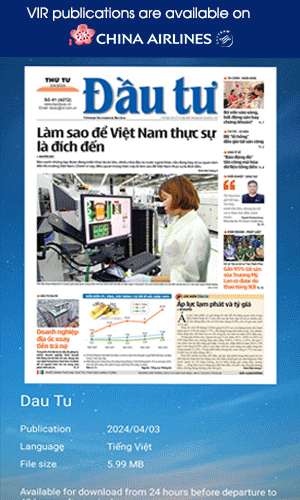Trade with Russia proves tricky for firms
 |
| The Russian market has opened more opportunities for Vietnamese firms, but experts have said that the country should develop a long-term strategy to access the Russian market, and organise more promotional events. Photo sggp.vn |
Nguyen Thanh Son, Vietnamese Ambassador to Russia, told Sai Gon Giai Phong(Liberated Sai Gon) newspaper that the lack of market information was the biggest challenge.
Businesses are also worried about Russian economic, political and social instability after the embargo imposed by the US and some European countries.
Bui Thi Thanh An, deputy director of the Viet Nam Trade Promotion Agency, said that most companies did not know about customs and cargo shipping procedures. Language barriers and local consumer habits have also been a problem.
Truong Chi Thien, director of Vinh Thanh Dat Food JS Co said that Russian partners preferred to pay cash instead of using a Letter of Credit (L/C) payment method, which leads to many risks.
In addition, the devaluation of the ruble and high transportation costs have been an obstacle to Vietnamese companies.
Le Thi Ha Chi, director of Nha Be Garment Corporation, said it took about 50 days for cargo products to arrive in Russia.
A 20-foot textile and garment container exported to the US or Europe costs US$1,000-$2,000, while it is $3,000-3,400 to Russia. Such costs have lowered Vietnamese product competitiveness compared to other countries, particularly China.
In Moscow and St Petersburg supermarkets and big stores, there are few Vietnamese products. Only frozen fruits, seafood and aquatic products are available.
In Sochi Province, which has a high density of stores and supermarkets, Vietnamese products are rare.
Nguyen Thi Minh Hanh, a Vietnamese lecturer at a university in Russia, said that Russian consumers liked Vietnamese products for their quality and good price. But most of them were sold in Moscow only.
Nikolay Kapustkin, deputy chief representative of the Russian Trade Office in Viet Nam, said that Russia wanted to diversify its import markets, and include more products from Viet Nam. They like Vietnamese rice, but it is hard to find.
Opportunities
The Russian market has opened more opportunities for Vietnamese firms, but experts have said that the country should develop a long-term strategy to access the Russian market, and organise more promotional events.
Free trade agreements (FTA) will open up the market even further. The Viet Nam – Eurasian Economic Union (EAEU) FTA takes effect in early 2016, when taxes on overcoats, sport shoes and some kinds of footwear will be cut to zero per cent.
FTA commitments will include cutting 82 per cent of tax lines on the garment-textile sector and 77 per cent on footwear, 95 per cent on seafood, and 76 per cent on furniture.
Because of the embargo imposed by the West, Russia needs to look to other markets to meet the demand of its nearly 150 million people.
Nguyen Canh Son, chairman of the board for the Ha Noi-Moscow Trade Centre Investment Joint-Stock Company (INCENTRA), said that Russians liked to use European products, but with the devaluation of the ruble, they preferred lower-priced products, including those from Viet Nam.
INCENTRA plans to introduce Vietnamese products to more than 12,000 retail agents in Russia at the high-quality Vietnamese goods fair 2015 in Moscow in November.
Le Dao Nguyen, deputy general director of the Bank for Investment and Development of Viet Nam (BIDV), said the bank had offered capital assistance to exporters to Russia with an interest rate of 1-1.5 per cent lower than the market rate.
In addition, BIDV has implemented another programme on bilateral local currency payments, under which Vietnamese exports to Russia would be paid by dong and Russian imports to Viet Nam would be paid by rubles.
What the stars mean:
★ Poor ★ ★ Promising ★★★ Good ★★★★ Very good ★★★★★ Exceptional
Latest News
More News
- Vietnam, India economic cooperation to thrive following strengthening of strategic partnership (August 02, 2024 | 12:34)
- Vietnam’s fresh pomelo licensed to export to RoK (August 02, 2024 | 10:32)
- More than 6,800 enterprises resume operations in July (August 02, 2024 | 10:22)
- Vietnam Airlines, Hong Kong International Airport cooperate to open new routes (August 02, 2024 | 09:33)
- Strong manufacturing growth driven by production ramp-up in July (August 01, 2024 | 21:52)
- Vietnam's pharmaceutical market boasts immense potential (August 01, 2024 | 21:49)
- Investment in Vietnam’s carbon market: the opportunities and the challenges (August 01, 2024 | 10:46)
- ToCoToCo's R&D team serve up organic jasmine green tea delight (August 01, 2024 | 08:00)
- Cold storage providers offering wide service range (July 31, 2024 | 22:00)
- Some adaption efforts paying off at seaports (July 31, 2024 | 20:00)

















 Mobile Version
Mobile Version